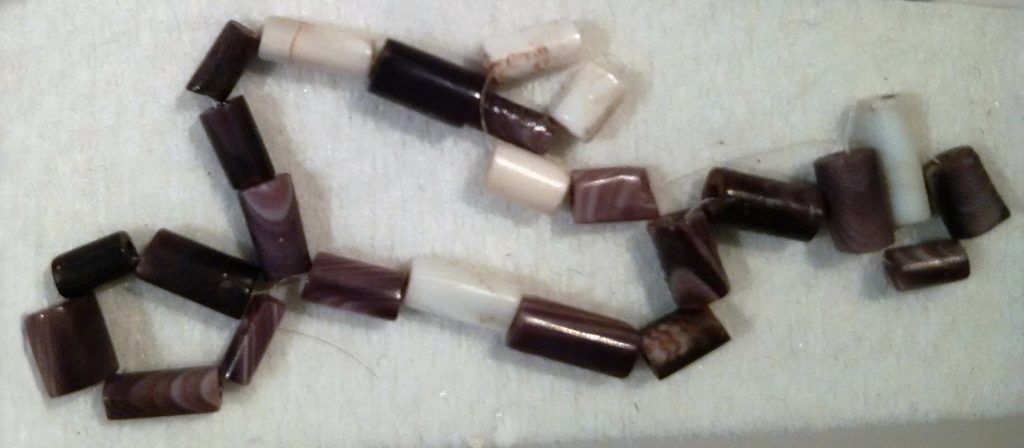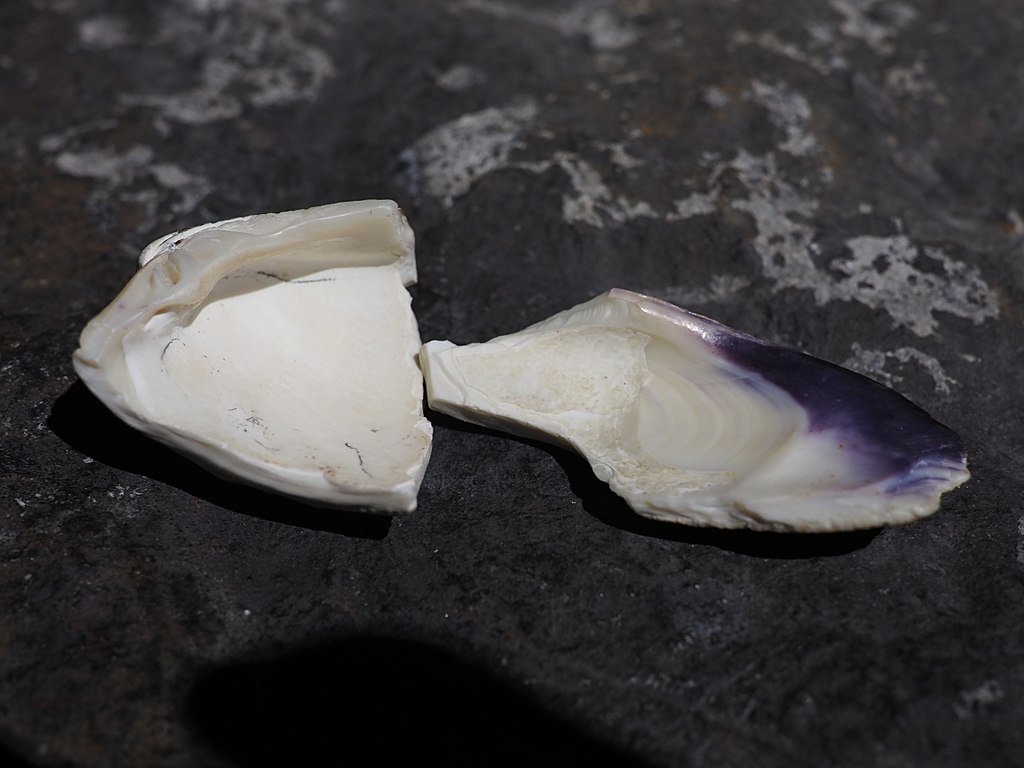While not a mineral in the strictest sense, Wampum beads are among the most collected artifacts out there. Once used as currency in ancient America, they’re now mostly found in individual collections. These days it’s mostly collected as chips of the shells that are used to create the famous beads from a previous era.
Let’s dig in and get to the root of the matter. It’s time to check out our guide to wampum.
A Brief History of Wampum

Wampum is the descriptor for the material used in ancient beaded necklaces. These were used as trade goods among the Native groups in North America and even found their place as a currency in the early days of the colonies.
The origin of the name seems to originate from a Native word meaning, “strings of white beads” or “white string” depending on who you ask.
Among some tribes, Wampum had a tight symbolic meaning as well. It was used as belts holding the individual’s name and station by the Iroquois, while others used them to formalize agreements and treaties in banners.
The end result: pretty much everyone agreed they were valuable. While their cultural use wasn’t of much concern to the colonial Europeans, they made a valuable trade good when it came to purchasing things from the local tribes.
Wampum is made from two different types of shells. The white beads are made from the internal portion of the channeled whelk’s shell, while purple or black beads were made from the shell of the Quahog clam.

The shells were cut down, drilled with a quartz hand drill, and then strung. Stringing occurred when the beads were still raw, they were rolled on an abrasive stone with water to create the smooth outer texture of the shells.
On landing, they were understood quickly as currency, and an exchange rate developed with the European currency. They were actually considered legal tender in the early days of the colonies.
Eventually, the process became industrialized and diluted their value as a currency. Wampum remained an important part of the indigenous cultures that had used it before, but it became less useful as a currency item.
The important thing here to note is that the creation of Wampum beads was made from a limited resource and was heavily labor-intensive. These made them an ideal “sink” of time and their various cultural uses lent them some serious value.
Currently, they’re still available as both loose beads and in completed projects. The majority of the latter are sold by Native artists, while loose beads are usually produced in bulk overseas and then sent back. That is if they were ever actually made of the correct shells in the first place.

So, What Wampum Are We Looking For?
What most people find themselves looking for is less the beads, which were highly prized and are of archaeological significance when found for the most part, but instead the shells of the invertebrates used to make them.
The shells are only found on the East Coast of the United States, particularly in the New England area. The invertebrates that possess the shells have a fairly small range.
That said, it’s not the rarest material you can beach comb for.
The collected pieces of Wampum usually found are between a dime and a nickel in size. Most people are searching only for the sea-polished remnants of quahog shells, since the internal portion of a whelk shell may not be immediately recognizable.
As we noted above, you should report any actual artifacts you find to the appropriate local agency.
But it’s free game when it comes time to collect some bits of the shell for yourself.
How to Find Wampum
Finding Wampum isn’t that hard… you just have to be in the right areas to find it. For the most part, they’re found on beaches in places like Delaware and Maryland. The native range of the clam runs down much of the East Coast.
They’ve also been introduced in other coastal areas in the US, where establishing populations has had varied results.
There is one thing to note: it appears that the diet of the clam has a huge effect on the shell’s coloration. Those too far North will have blue shells instead of the more notable purple that people are usually searching for.
Beachcombing is very similar to general rockhounding, best compared to searching creek beds in my experience. Different areas require different techniques, but two are still king when it comes to finding cool stuff on the beach.
Along sandy shores, it’s best to walk up and down them looking at the area where the waves are pulling back. This will often unearth various bits of things, including Wampum in this case, and they’ll be easy to see as the wave sets go back out.
You may even want to get in ankle-deep water to check these areas, Wampum in particular the white portions of the shell are easy to separate from the sands beneath the surface. I usually carry a stick to poke at possibly interesting things without having to bend down, but it’s a pretty minimal-equipment affair.
Low tide will, as a general rule, be a better time to search for things. The water is out farther and has already receded and left behind many of the goodies that are mixed in.
On rockier beaches, a bit of digging may be in order. Promising spots can be found along the edges of rock reefs, where bits of stuff get pushed into the sides and aren’t drawn back into the receding sea. The majority of Wampum is small and relatively thin, making it a good size and shape to get trapped.
In this case, find an area a bit above the tidal area during low tide. You’re looking for things roughly the same size as what you’re looking for, in this case stones and bits of shell about the size of a nickel. For the most part, larger stuff “sinks” in the various bits of gravel and debris.
You may need to dig a bit, but no more than a few inches.
From there, use a large flat stone or a small shovel to spread things out and pick through what’s there to find what you’re looking for. If you’re careful and ordered about it you can get through a large amount of material very quickly. I usually spread the pile one last time before moving to a new location, as sometimes you’ll miss things.
And that’s really all there is to it:
- Find a beach in their native range
- Go beachcombing
- Bring home Wampum
From there it’s just figuring out what you want to do with them!
- Online rock and mineral club for collectors of all levels!
- Find community with like-minded rock and mineral enthusiasts.
- Monthly Giveaways!
- Free Access to Entire Digital Library of Products (current and future products)*


